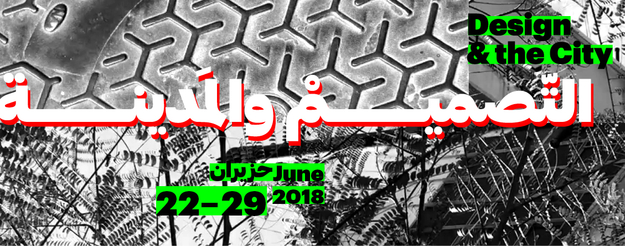DEADLINE: 10 May 2018
“Was this here yesterday?’
“In my 10 years of living here, I have never seen this before”
These phrases are abundant. As people living here, we are constantly surprised at how Beirut manages to transform itself overnight, like an autonomous ecosystem, and surprise us time and time again.
This city’s lifespan cycle is short, fast, dynamic and constantly in motion. Most cities look the same for many years without much change, and in most cases cities are governed by the built form rather than the people that inhabit it. In a matter of months and sometimes even weeks and days, the same street in Beirut can become flooded with new interventions and others abandoned once the (e)motions of the people are displaced.
In 2018, Beirut Design Week (BDW) returns for its seventh edition themed “Design and the City: Visual Identity”. Under this theme, designers were invited alongside activists, writers, educators, students etc. to consider design’s transformative role in conceiving of the urban space in such ways that express our needs, desires and dreams as inhabitants of the city.
“Design and the City: Visual Identity” draws inspiration from local grass-root movements which redress questions of agency and representation vis-à-vis decision-making processes that have direct influence on our lives. These movements provided alternatives for imagining inclusive models for the urban experience. While the viability of these models continues to be debated and explored in several spaces across the city, this year’s theme offers its platform to showcase objects, tools, vocabularies and processes that help create new itineraries for the everyday practice of place-making and reclaim the right to the city.
Design is in every aspect of our life. The endless list of possibilities in the design-scape is what constitutes and remakes our experiences. It calls upon all the creative designers to bring forward their own visions of how their practices can contribute to good governance, social inclusion and environmental justice.
This year’s Beirut Design Week celebrates the motions and changes of our city with its new visual identity. It boasts with contradictions, movement, boldness, chaos, and freedom of inputting and morphing, which is inherently unique to this place. This year’s identity is dynamic rather than static, as we use hundreds of diverse short video-footages as a backdrop. Hidden patterns, lost textures, subtle ornaments, traces of people, details of the streets, are all part of a collage of bustling motion.
With this freedom of imprint that is very rare to find in the world, we invite designers, practitioners, educators, enthusiasts of design, creatives, activists, writers, students, and everyone else to consider design’s transformative role in conceiving the urban space in such ways that express our needs, desires, and dreams as inhabitants of the city.
Design & the City: Social Change
How can architecture, furniture design or jewelry design collaborate with social workers to play a transformative role in the city?
Design & the City: Environment
How can a fashion designer or a documentary maker engage with nature and make us rethink our rapport to our environment?
Design & the City: Fair-Use
How can the food and beverage industry adopt a design thinking approach that extends from the sourcing of the ingredients to the production of the goods, affecting local economies and contributing to the city’s environmental ecosystem?
Design & the City: Governance
How can architects, urbanists and planners influence state policies related to the reconstruction of a post-war city? And share some lessons learned with other neighboring destroyed cities getting ready for reconstruction?
Design & the City: Access
How can the tech-industries collaborate with designers to reimagine our daily interactions within the city and enhance our urban life? What can smart solutions offer to people who are abled or with special needs, women, children etc.
In keeping with this notion, the BDW 2018 theme focuses on searching for what is possible across the horizon of creative practice rather than dwelling on what already exists. It aspires to depart from the current city with its visible and invisible aspects, tangible and intangible realities, private and public spheres, towards an open ground for experimentation. It envisions an alternative shared future with better conditions to live, thrive and engage.
By proposing this theme, BDW2018 asks the following questions: How can designers across the wide spectrum of the creative industry channel ideas and skills to model structures that address blind spots, shortages and problems within the urban experience? And in what ways can they collaborate with other stakeholders (activists, environmentalists, artisans, entrepreneurs, agriculturalists and food experts, technology consultants, and researchers etc.) to face systemic and supplemental challenges?
This year’s invitation is extended to actors within and beyond the design community in Lebanon who are motivated by the necessity for urban change. By providing the conditions for experimental and strategic coalitions between designers and other experts, BDW introduces its new direction towards encouraging cross-disciplinary initiatives.
BDW is programmed as a participatory and community-led initiative, calling upon stakeholders to take active part in the strategic planning, thematics, initiatives and educational programs which together will make the whole of BDW2018.
